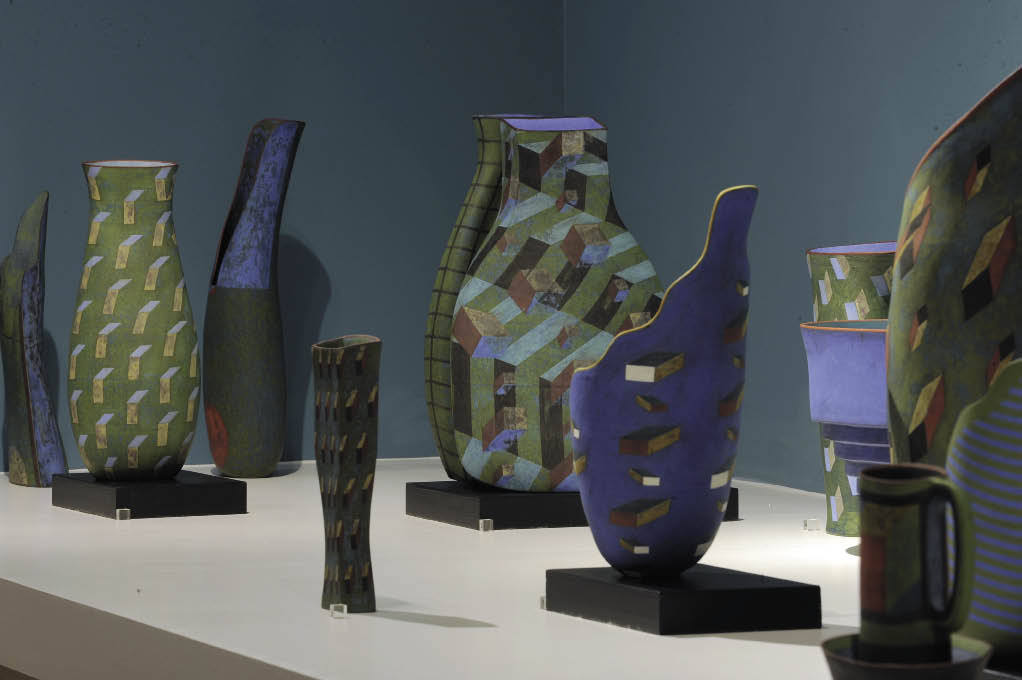‘Museum decides against building new extension’ is not the stuff of newspaper headlines, so most of you will be unaware that the National Museum of Wales in Cardiff has been creating a distinct museum of art on the top floor of its existing Edwardian building. A few weeks ago, the Welsh museum relaunched its Impressionist and Modern galleries after an imaginative paint job and a rehang, and next year it will open a new suite of contemporary galleries in its former archaeology wing. For £6.5 million — £1 million from the Welsh Assembly government — it will have bought itself 40 per cent more space (comparing favourably with another national museum currently poised to pour £50 million of Department of Culture, Media and Sport money into a hole in the ground in Bankside). But the National Museum Cardiff can afford to economise. It doesn’t need flash architecture to attract attention; its collections are attraction enough.
‘Museum decides against building new extension’ is not the stuff of newspaper headlines, so most of you will be unaware that the National Museum of Wales in Cardiff has been creating a distinct museum of art on the top floor of its existing Edwardian building. A few weeks ago, the Welsh museum relaunched its Impressionist and Modern galleries after an imaginative paint job and a rehang, and next year it will open a new suite of contemporary galleries in its former archaeology wing. For £6.5 million — £1 million from the Welsh Assembly government — it will have bought itself 40 per cent more space (comparing favourably with another national museum currently poised to pour £50 million of Department of Culture, Media and Sport money into a hole in the ground in Bankside). But the National Museum Cardiff can afford to economise. It doesn’t need flash architecture to attract attention; its collections are attraction enough.
For this Wales has to thank the Davies sisters, two teetotal Sabbatarian spinsters from rural Montgomeryshire who must surely rank as history’s most unlikely modern-art collectors. In the 1900s, when in their 20s, Gwendoline and Margaret Davies came into their share of the family coalmining fortune and, with advice from their governess’s brother, started spending it on art. By 1924, when Gwendoline stopped buying, the Davies sisters were Britain’s foremost modern-art collectors. Between them they left 260 works to the National Museum, including Old Masters and British followers of Impressionism collected by Margaret up to her death in 1963.
The sisters started gently in 1908 with a couple of ‘trainer’ Corots and quickly graduated to Millet and Daumier, then barely known in Britain. Within a few years they had caught up with Impressionism, and in 1913 they indulged their taste for watery Monets with Margaret’s purchase of ‘The Palazzo Dario’ (1908) and ‘Charing Cross Bridge’ (1902) and Gwendoline’s acquisition of a set of three ‘Waterlilies’ (1905, 1906 and 1908). When Gwendoline splashed out £5,000 that same year on Renoir’s ‘“Blue Lady”’, La Parisienne’ (1874), the stabilisers were well and truly off.
The war slowed down their collecting, but didn’t stop it. While helping to run a French Red Cross canteen in the railway station at Troyes, Gwendoline managed on occasional sorties to Paris to spend £11,000 on seven pictures at the Bernheim-Jeune gallery. A single post-war trip in 1920 to the same gallery netted Margaret Cézanne’s ‘Still Life with Teapot’ (1902–06), Manet’s ‘Argenteuil — Boats’ (1874) and one of the first van Goghs to enter a British collection, the proto- Expressionist ‘Rain — Auvers’ (1890). The sisters’ tastes were by now so advanced that when in 1921 they generously offered to loan Cézanne’s ‘The François Zola Dam’ (c.1877–8) to a Cézanneless National Gallery and Tate, the offer was initially turned down.
Entering the museum’s attractively repainted Edwardian spaces, dotted with sculptures — the Davies collection included six Rodins and two Degas bronzes — you’re reminded of a time when art galleries were designed as places of relaxed enjoyment rather than Spartan study. Still, there’s plenty to engage the student even in the later rooms where the Davies sisters’ contribution tails off. The seven fine Gwen Johns on show came from other sources — Gwendoline bulk-bought Augustus but short-sightedly ignored his sister — as did the three marvellous Gaudier-Brzeska sculptures, including the ultra-modernist aluminium-cast ‘Dog’ (1914) who shares a case with Picasso’s ceramic pigeon-cum-pitcher, ‘La Tarasque’ (1954).
Picasso’s potty surrealism is further developed in the museum’s new temporary exhibition, a 70th-birthday retrospective of Oswestry-born potter Elizabeth Fritsch. The word ‘potter’ sounds a little too grounded for an artist who, since she first knocked our expectations of earthenware sideways in the 1970s with her attenuated off-kilter painted vessels, has taken pottery into another dimension. For Fritsch, a vessel is as likely to mean a boat as a receptacle: she stretches meaning as jazz musicians bend notes, plucking inspiration out of the air, the water, the rocks, the works of the Metaphysical poets, the jazz compositions of Thelonius Monk, the revelations of quantum physics or wherever else she happens to find it. The twinkling geometry of her coloured patterns might be the creation of a maths prodigy turned patchwork quilt-maker — in place of Magrittian bowler hats, her surreal painted skies rain geometric solids. ‘I’m a mathematical tourist,’ she confesses.
Anyone to whom Op Art previously seemed an empty exercise will find it suddenly acquiring a new purpose when wrapped around the deceptively flattened forms of Fritsch’s ‘two-and-half-dimensional’ vessels. Her work defiantly resists reproduction — another reason to visit the National Museum Cardiff.
© PROLITTERIS, ZURICH






Comments